In the blogpost, Reminiscences of Uncle Bob, Part One, the focus was on the life of Charles and Maggie Daily while they lived on two farms 13 miles outside of Omaha, Nebraska. Today’s post continues to reveal aspects of their life through the stories that their son Robert told during an interview when he was about 84 years-old.
Robert related that in January of 1908, when he was seven years-old, his family moved from the farm back to the house in Omaha where they had lived prior to 1901.1 Robert’s cousin Bill Bailey, who had been living with them on the farm since about 19052, had returned to Floyd County, Indiana. Bill’s 18 year-old brother Alpha (Joseph A. Bailey) came to live with the Dailys in Omaha and Robert states, “Alpha was, well, I said brother, ‘cause he was with us for eight years.”3
In his interview, Robert tells about his father’s occupation at that time:
Interviewer: Was he back into the coal and ice business then?
Uncle Bob: Yeah, he, well, no. I’ll take it back, take it back. He went into the potato chip business.
Interviewer: Now, that was something new to me that I just discovered recently. What, he …
Uncle Bob: That would ha’ been in the, in the year of 1908.
Interviewer: Well, uh, did he manage the potato chip factory?
Uncle Bob: Yeah, it was just a home [business]. Well, he had one o’ these here, like the old-fashion, uh, mail carrier wagons and one horse.
Interviewer: Uh huh.
Uncle Bob: I know, uh, my cousin was with us. See, my cousin come to our place in 1908.
Interviewer: And what cousin was that?
Uncle Bob: That was Alpha, Alpha Bailey.
Interviewer: Alpha Bailey, okay.
Uncle Bob: …I know Alpha worked in the, in the factory. It was just a big vat, you know, and they had the potato slices.
Interviewer: Well, you made ‘em? It was a family operation, then?
Uncle Bob: Yeah, well, Dad and …, even Ruth Thompson. She was Ruth Thompson then.
Interviewer: Um hmm. Um hmm.
Uncle Bob: That was Mother’s sister’s girl. She worked in there too. That’s when she was just out of high school at the time.
Interviewer: Well, that was something I had never heard of before, I didn’t know about this potato chip factory.
Uncle Bob: Oh, Dad’d load up his wagon that way. He had routes to go. ‘Course he had help to make the chips, you know.
Interviewer: Um hmm. Um hmm.
Uncle Bob: I remember Alpha workin’ in there, and stirring the potatoes in a big vat that way and, uh, get’n ’em ready for next day’s delivery.
Interviewer: Sure, sure, delivering the next morning.
Uncle Bob: Then when night’d come, why, he’d bring home, oh, anywhere from eight to ten sacks, and I’d peddle ‘em in the, around our, where we lived, see.
Interviewer: Um hmm. How much did a package of potato chips cost?
Uncle Bob: Ten cents.
Interviewer: Ten cents! (Chuckling)
Uncle Bob: An’ course, they was big ones, you see, they was half pounders.
Interviewer: I’m sure they were. Ohhh! Now, how long did he do that?
Uncle Bob: Well, that, I suppose …we was only in Omaha 15 months at that time, so it was in that there length of time, see.
Interviewer: In about a year’s time.
Uncle Bob: But Mother wanted to get back to the farm again, so Dad went lookin’ around again. Then’s when we landed down in Kansas, see.4
The 1909 Omaha City directory has an entry for Charles which reads: “Daily Chas M, Potato Chip Factory 935 N 24th, r 1022 S 46th av.”5 The address of the Potato Chip Factory (935 N 24th) was the same address as Maggie’s brother-in-law’s residence and printing company (John C. Thompson & Son).6 In the business directory, there was a listing in the section for “Potato Chip Factories” which read: “THOMPSON’S U-CAN-ET-A POTATO CHIPS, 935 N 24th.”7 In the 1910 edition of the business directory, Thompson’s was not listed, instead there was a listing under Charles’ name. Robert states: “…the potato chip factory was on the back end, back end of the building where Uncle John had his printing shop. … He had his printing press set type, y’know. An’ a big board, you could see that. There was a big board with all the set type, y’know, he printed.”8 When asked, “Did you raise a lot of potatoes on the farm and that’s why you made potato chips?,” Robert responded, “No, no, that wadn’t it. You don’t raise potatoes down there, anyway. Whate’er there was, are just for eatin’, y’know. I don’t know how he come to get into that, but he – little one-horse outfit, y’see.”9
Robert mentions that Ruth Thompson was just out of high school when she started working at the potato chip factory. In the spring of 1908, Ruth was 14 years-old, a year younger than Robert’s eldest sister Gladys. According to Robert, Gladys went to high school in Omaha while their family was still living on the farm.10 In the early 1900s, there were not very many options for education beyond grammar school in Omaha. A perusal of the 1908 Omaha city directory reveals there were a few trade schools, such as barber, dressmaking or railway training; a few business schools; several Catholic or other religion-affiliated schools; Creighton High School for young men; and Brownell Hall (a residential school). One of the possibilities of where Gladys and Ruth could have attended was Omaha High School (a public school), located a few blocks from the Thompson home.
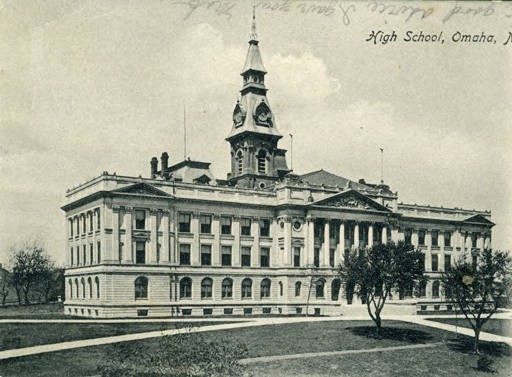
“Omaha High School was located at 20th and Dodge Streets. In the late 1890s, the original brick building was deemed unsafe and unhealthy. Construction began on the replacement building in 1900. The east section was completed and in use by 1902. The south section was completed in 1905, and the west section was completed in 1910. The last section was completed in 1912. Parts of the original building were used until 1910. The old building was then removed, leaving an open courtyard at the center of the new building.”12
While the Daily family lived in Omaha, Charles rented a farm. Robert told a story of an event that occurred at that farm:
Interviewer: Mom used to tell the story about somebody that set the barn on fire. Now, who was that? And where?
Uncle Bob: Well, oh, the barn we had, uh, burn, that was out in Grand Isle, Nebraska. Y’see, when we lived in Omaha, my cousin was with us still. And Dad rented a, out at Grand Isle, Nebraska, rented a quarter out there. That was sweet corn country at that time, and raised a lot o’ sweet corn. An’ the barn, ‘o course, was, uh, never knew how. Cousin never smoked or anything like that. An’ he got up an’ been out an’ got the horses ready an’ back in gettin’ breakfast. … They always figured that some, some, uh, let’s say tramp or man, slept in the barn that night.
Interviewer: Oh, I thought maybe it was, I thought it was, uh, kids playing with matches.
Uncle Bob: No, never knew just how it happened.
Interviewer: I see.
Uncle Bob: Alpha run out right away quick. ‘Course, one horse broke, broke loose. The fire seemed to be in, right near, in front of the horses, something like that. An’ o’ course, when he got right there, opened the barn door, the horse come out an’ knocked him down. It could ha’ been, it could ha’ a been such a thing, that he would ha’, uh, wouldn’t ha’ been able to get out there.13
On one of Charles’ trips, he mailed a postcard from Broken Bow, Nebraska, to his three-and-a-half year-old daughter Elizabeth. The upper left corner notes his name as “Papa” and the cost of the postage stamp was one cent. Although the penciled address is extremely faded, the postcard was addressed to their home in Omaha.
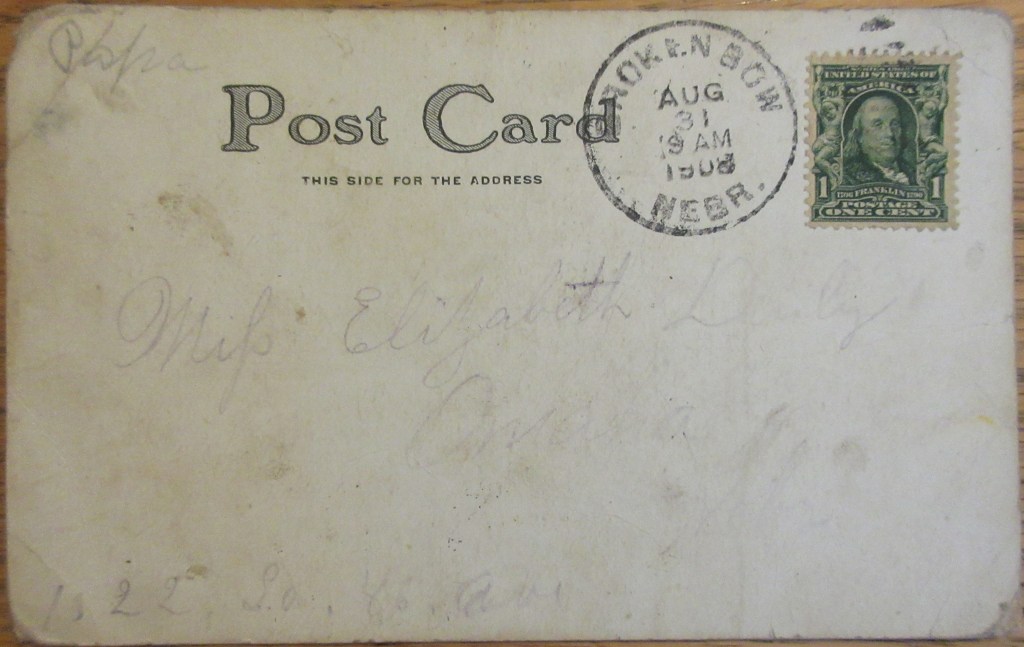
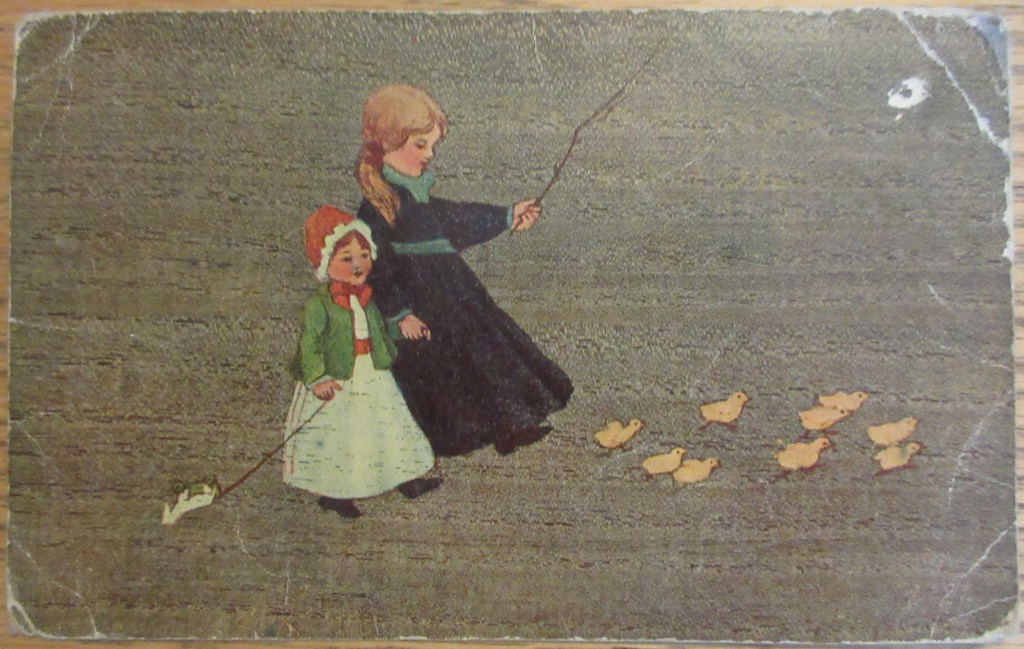
One of Charles and Maggie’s grandsons is the keeper of a trunk which holds many mementos of the Daily family. One item is an invitation to the Commencement Exercises of Bassett High School in Bassett, Nebraska. Maggie’s cousin’s (Viola J. Griffith) children were two of the nine graduates in the Class of 1908, graduating on May 28. For a period of time during Maggie’s childhood, Viola and her brother William and their mother Malissa Griffith (nee Smith) lived in Maggie’s home in Iowa.14 Five years after their mother died in 1880,15 Viola married John G. Van Winkle in Keya Paha County, Nebraska, with William standing as a witness of the marriage.16 Viola’s children who graduated from Bassett High School 23 years later were Josie and Orlando Van Winkle whose ages (based on their ages in the 1900 U. S. census) were 20 and 17, respectively.17 Josie may have been named after Maggie’s mother Josephine Smith and Orlando may have been named after Maggie’s uncle Orlando Smith. Bassett was about 230 miles from Omaha in north central Nebraska.
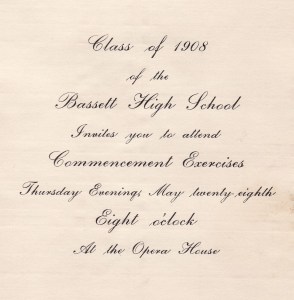
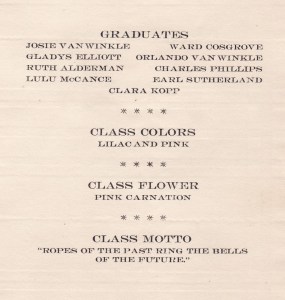
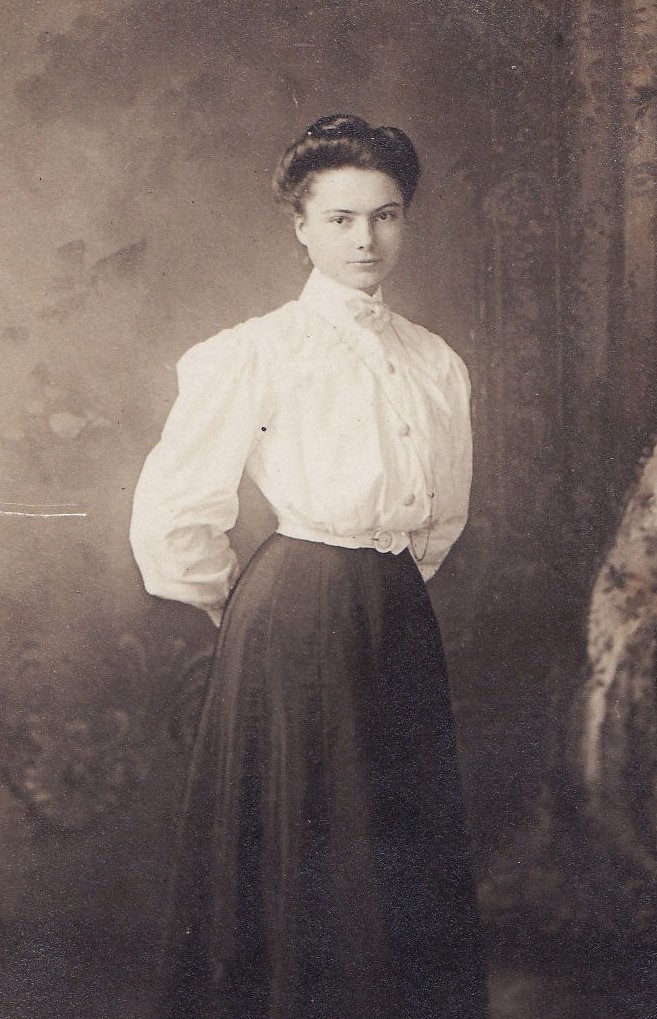
During this period when the Daily family lived in Omaha, there are a few additional things that can be noted. Robert mentions that he and his sisters would often visit their grandmother’s sister Joannah (nee Smith) Gantz. He said the Gantz family “lived just over the hill from us. Oh, we’d stop at Aunt Joannah’s quite often. They lived just a block from the church we went to for Sunday School when we was kids.”18 The church to which Robert is referring is probably South West Methodist Episcopal Church. Robert also mentions that his father took a trip to visit his brother William who was living in Nevada, but Robert is unsure of the timing of the trip, saying: “Dad’d been out there while we lived in Omaha the first time. He’d been out there, went out there a few months. I don’t know where Dad got all his time, but that’s, that’s when he had the potato chip factory. Whether he didn’t have it very long or not, why. I remember it so well, bringing potato chips home and I’d deliver ‘em, some around the neighborhood. … Yeah, he done that back in, sometime in 1908. Maybe, maybe he’d been out before that. See, it could ha’ been. I don’t know when it was.”19 And lastly, Maggie’s sister Emma passed away in November 1908. An announcement in the Omaha Daily Bee stated: “The body of Mrs. Emma Thomson [sp.], wife of J. C. Thomson [sp.], an Omaha printer, will arrive in Omaha, Wednesday and fureral services are to be held, Thursday. Mrs. Thomson died at Loveland, Colo., from which place the body is being brought. The Thomsons live at 935 north Twenty-fourth street, Omaha. Mrs. Thomson was 43 years old.”20
Uncle Bob’s reminiscences to be continued in part three.
1 M.R. Wilson, transcription of Robert Lee Daily Interview by R. Thiele, recording (ca. 1984): 4.
2 M.R. Wilson, transcription of Robert Lee Daily Interview: 19.
3 M.R. Wilson, transcription of Robert Lee Daily Interview: 11.
4 M.R. Wilson, transcription of Robert Lee Daily Interview: 4-6.
5 Omaha Directory Company, Omaha City Directory 1909 (Omaha, Nebraska: Omaha Directory Company, 1909): 291.
6 Omaha Directory Company, Omaha City Directory 1909: 1133 & 1384.
7 Omaha Directory Company, Omaha City Directory 1909: 1383.
8 M.R. Wilson, transcription of Robert Lee Daily Interview: 19.
9 M.R. Wilson, transcription of Robert Lee Daily Interview: 19.
10 M.R. Wilson, transcription of Robert Lee Daily Interview: 9.
11 Nebraska Memories, “Omaha High School’s new east wing and original building,” http://memories.nebraska.gov/cdm/singleitem/collection/ops/id/4/rec/14.
12 Nebraska Memories, “Omaha High School’s new east wing and original building,” http://memories.nebraska.gov/cdm/singleitem/collection/ops/id/4/rec/14.
13 M.R. Wilson, transcription of Robert Lee Daily Interview: 10-11.
14 “United States Census, 1870,” database with images, FamilySearch (https://familysearch.org/ark:/61903/3:1:S3HY-6W2S-T6C?cc=1438024&wc=KKTP-FM9%3A518655701%2C518688401%2C519561701 : 11 June 2019), Iowa > Jefferson > Fairfield, ward 3 > image 6 of 14; citing NARA microfilm publication M593 (Washington, D.C.: National Archives and Records Administration, n.d.).
15 Find a Grave, database and images (https://www.findagrave.com : accessed 07 March 2021), memorial page for Melissa Smith Parsons (23 Apr 1843–14 Nov 1880), Find a Grave Memorial no. 43065696, citing Bethesda Cemetery, Fairfield, Jefferson County, Iowa, USA.
16 “Nebraska Marriages, 1855-1995,” database, FamilySearch (https://familysearch.org/ark:/61903/1:1:Q2ZP-D7Y9 : 28 November 2018), John Graber Van Winkle and Viola Griffith, 24 Dec 1886; citing Marriage, Springview, Keya Paha, Nebraska, United States, Nebraska State Historical Society, Lincoln; FHL microfilm 2,078,763.
17 “United States Census, 1900,” database with images, FamilySearch (https://familysearch.org/ark:/61903/3:1:S3HT-68N9-4VJ?cc=1325221&wc=9B7H-CXX%3A1030896901%2C1032582501%2C1032587901 : 5 August 2014), Nebraska > Keya Paha > ED 140 Keya Paha, Pine, Mills & Simpson Precincts > image 27 of 29; citing NARA microfilm publication T623 (Washington, D.C.: National Archives and Records Administration, n.d.).
18 M.R. Wilson, transcription of Robert Lee Daily Interview: 20.
19 M.R. Wilson, transcription of Robert Lee Daily Interview: 14.
20 “Mrs. Emma Thompson,” Omaha Daily Bee (November 5, 1908): 2, https://nebnewspapers.unl.edu/lccn/sn99021999/1908-11-05/ed-1/seq-2.pdf.
[…] Uncle Bob’s reminiscences to be continued in part two. […]
LikeLike
[…] his family spent 15 months in Omaha, Nebraska (see Reminiscences of Uncle Bob, Part Two), Robert L. Daily reported in an interview when he was about 84 years-old that his family moved to […]
LikeLike